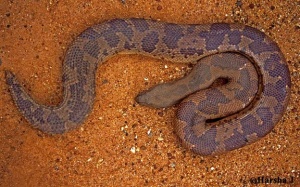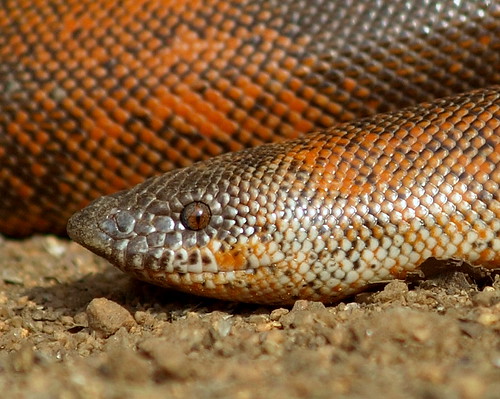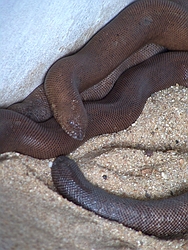Sand Boas are related to the well-known boa constrictor of South America. They are also closely related to the python. All these non-venomous snakes kill their prey by squeezing them in their muscular coils.
There are three species of sand boas in India. All are stocky, thick-bodied snakes, especially suited for underground activities.
- Common sand boa (Eryx conicus) has a blotched pattern of spots and wavy bands and a very rough, keeled, dull body
- Red sand boa (Eryx johnii) : it is reddish brown , smooth and glossy.
- Whitaker's sand boa Eryx whitakeri) : Recently described by Romous Whitaker
However, the greatest dissimilarity is in the tail. The red sand boa (which is black in north-west India) has a tail so blunt that it looks as though it has been chopped off. In temperament too they do not resemble each other. The common sand boa is easily irritated and is quick to strike and bite, while the red sand boa has great patience and will never bite. This makes it an ideal snake for a child to be introduced to. Sand boas mostly eat rodents, which makes them another friend of the farmer. Sand boas have live young, usually 6 to 8, and newly hatched boas eat small mice, lizards, birds and insects.







